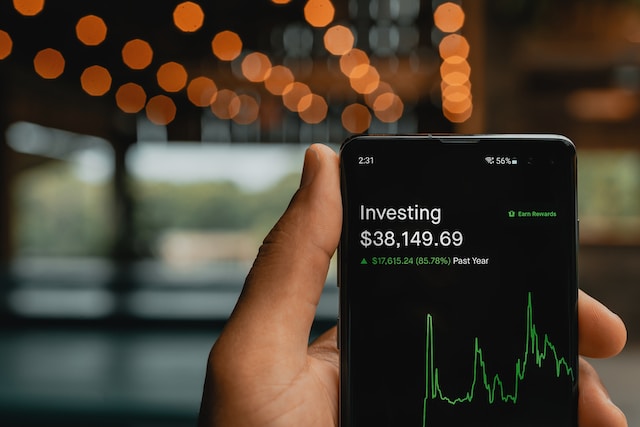You may have received your statement or looked at your superannuation balance online lately and be wondering?
- Why has it gone backwards?
- Why is my investment not performing as well as the benchmark?
These are all very valid questions. It is a confusing time in the investment world and whilst “comparison can be the thief of joy”, it is important to have some context around what is happening as well as a quick lesson on the basics of investing!
You will be used to hearing several mantra’s from FPD over time, and the current climate has never been a better example;
- Diversification is key
- It’s time in the market, not timing the market
Diversification
We invest your funds in line with your appetite for risk, as well as your investment preferences. This means that we asses;
- how you feel about particular investments
- how you would feel if your investment dropped by a certain amount
- how long you are investing for
- what is the purpose of the funds
Based upon our discussions, and the questionnaire everyone loves completing, we determine your risk profile, eg conservative, balanced, growth and invest your funds in accordance with this profile.
You may recall us talking about diversification, ie not putting all our eggs in the one basket. Each of the funds we invest in will be diversified across a number of areas;
- Asset classes – eg cash, australian shares, international fixed interest, property etc
- Economies
- Currencies
- Fund managers
- Types of investments
How much is allocated into each different portion will depend upon your risk profile.
Timing
We will never advocate timing the market, it is a very high risk strategy.
Investing is not for the short term. In most instances it is to provide for a long term goal, such as retirement.
Therefore, we need to let the funds have time IN the market. Whilst we would all love to see a good return after six months, 12 months even, in volatile times like this, it will go up and down and you may not see a positive return.
It is interesting to note that the Australian share market is still where it was in February 2020. We have had a big dip, and then a huge rally, but we are at the same point. I would suggest our expectations, however, would not match that.
Whilst it is difficult, we suggest you place your faith in the process and allow the time to have an impact on your investment.
Feel free to check your balance as often as you want, however, it will increase your stress levels if you are checking daily to see that magic green figure.
We have had a number of discussions with clients of late, how often are you getting a property valued? Do you trust the process that it will increase in value over time and don’t need to value it every day? It is a similar approach to your superannuation, pension or investment.
What does this mean for my portfolio now?
A truly diversified fund, with a longevity objective simply cannot keep pace with the market. These funds ignore the short term market noise and invest in quality, long term companies over a number of diversification areas.
The benchmark that you may be comparing you fund to may be doing better than your investment, as it is measuring where the market is now, not with longevity, nor diversification in mind. A benchmark will measure the very high returns and the very low returns. Your portfolio, however, may not include that level of exposure to such highs and lows, hence, may not return as well.
Examples;
The US market is a perfect example.
The US is the largest market for international or global equities. There are 7 stocks within that market, referred to as the magnificent seven, and you will be familiar with some of the names; Apple, Microsoft, Tesla, Amazon etc.
These 7 stocks make up all the gains the US market has had in recent times. They make up 35% of the US benchmark and ALL the gains.
Do you have exposure to some of these stocks in your portfolio? Yes, most likely and you would have benefited from some of the gains. However, do you have a third of your portfolio invested in these stocks? Absolutely not, as that would be an unacceptable risk to your portfolio. Taking Tesla as an example, the return in Jan – July 2023 was 110%. However, the return since August 2023 has been -20%. That’s a level of volatility that I am not sure many would be comfortable with.
So, if you compare your portfolio with a benchmark of the US stocks, the benchmark will have a much better return, as it takes into consideration a much larger exposure to those performers than your portfolio does.
An example closer to home is the Australian market.
The ASX 200 is made up of 35 resource stocks and 165 industrial stocks. However, the resource stocks are up by 70% and industrial stocks up by only 18%. This has been price driven – ie the price of iron ore or coal.
Again, does your portfolio have exposure to resource stocks? Yes, most likely. However, your portfolio will not have a high level exposure as commodities are risky. Those providers that invest in quality companies will have invested a portion in some of these companies but have not increased their investment in the companies as the increase in return is price driven, not an increase in the value of the company.
Therefore, if you were to compare your portfolio to the ASX200 benchmark, your portfolio would not do as well, as the volatility and risk measures are applied to your portfolio.
What is the moral of the story?
Sit back, and trust in the process.
Know that there is a lot that is done in the background by the investment managers. They are continually assessing the different markets, analysing where the opportunities may be, and the impact on the diversification and longevity aspect of the portfolios.
Please contact us to discuss if you are concerned. We regularly meet with the product providers to gain insights such as the above examples to understand why portfolio changes are made, or not made and the outlook for the coming months. We have had a number of discussions with clients and investment managers about whether to invest in cash given the higher interest rates and why that may not be the best option. Please contact our office on 1300 014 368 if you have any concerns or before making any decisions so we can assess together.





